A Brief History of CPUs: 31 Awesome Years of x86
AMD Am5x86
Offering an easy upgrade path for 486 computers, AMD's Am5x86 was really a 486DX with an internal x4 multiplier. This allowed the chip to run at 133MHz and ensured compatibility with most existing 486 motherboards, while offering performance on par with ,and sometimes better than, Intel's Pentium 75.
But what really stands out about the Am5x86 is that it became the first chip to make use of AMD's Performance Rating (PR), a tactic that would play an even bigger role later on. In this case, AMD sold the processor as an Am5x86-P75, letting customers know it was AMD's equivalent of a Pentium 75.
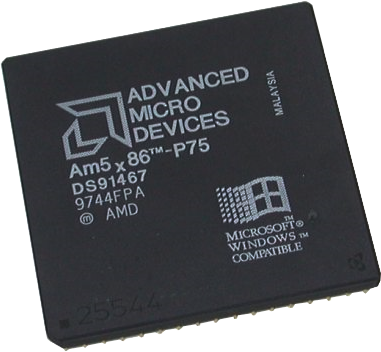
(Image Credit: Extrahardware.cz)
Date Released: 1995
Clockspeed: 133MHz
Did you know?
AMD K5
Intel, having helped spur the competition with a licensing agreement that paved the way for faster clones, didn't make the same mistake with its Pentium line. As a result, AMD (and everyone else) could no longer simply clone Intel's silicon and sell it as their own. And thus was born the K5, AMD's first attempt at a next generation CPU developed in-house.
As might have been expected, design problems reared their ugly heads forcing AMD to delay the K5's launch. After working out the kinks, AMD released the K5 in 1996. Technically superior to Intel's Pentium, the K5 contained 4.5 million transistors, five integer units, a much larger branch prediction unit, and 16KB of cache, or twice the amount as found on the Pentium.
Unfortunately for AMD, the K5 suffered from low clock rates and failed to deliver any knockout blows to Intel's Pentium, nor was it a sales success.
The biggest gaming news, reviews and hardware deals
Keep up to date with the most important stories and the best deals, as picked by the PC Gamer team.
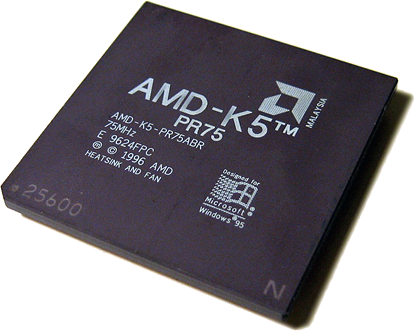
(Image Credit: x86-guide.com)
Date Released : 1996
Clockspeed: 75MHz - 133MHz
Did you know?
Cyrix 6x86 and MII
Formerly called the M1, the Cyrix 6x86 was both pin- and voltage-compatible with Intel's Pentium processor. However, it wasn't a reverse-engineered Pentium clone and instead an original design, which made it not 100 percent Pentium compatible.
Early versions shipped with 16KB of cache and showed impressive benchmark performance, often outperforming faster clocked Pentium chips in some scenarios. This led to Cyrix adopting a Performance/Pentium Rating of its own, despite its comparatively poor FPU performance.
Later versions of the 6x86 would be renamed MII. The MII revision brought with it lower heat output, paving the way for faster clockspeeds. This sometimes came at the expense of compatibility because it required non-standard bus speeds at 75MHz or 83MHz on socket 7 boards.
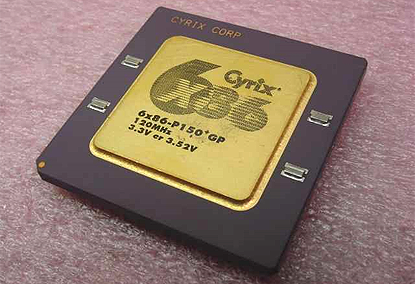
(Image Credit: Recycledgoods.com)
Date Released: 1996
Clockespeed: 80Mhz - 385MHz
Did you know?
AMD K6
While AMD's K5 turned out to be a forgettable CPU, the K6 rollout went much more smoothly and to a warmer reception. This was thanks in part to co-development efforts by Vinod Dham, who is known as the "Father of the Pentium" for his work in developing the Pentium CPU. Dham left Intel in 1996 before ultimately landing at a company called NexGen, later acquired by AMD. NexGen actually designed what would be the K6, which included MMX instructions and an FPU.
Launched in April 1997, the K6 served as a drop-in replacement for Pentium's Socket 7 motherboards. The K6, along with the NexGen acquisition, once again underscored AMD's position as a major chip competitor.
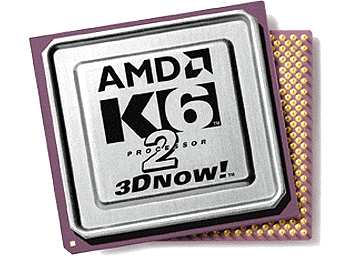
Date Released : 1997
Clockspeed: 166MHz - 300MHz
Did you know?
Intel Pentium II and Pentium II Xeon
To improve yields, Intel moved the L2 cache to an external cache chip. Doing so meant running the cache at half the speed of the CPU, which Intel tried to negate by doubling the amount of L2 cache from 256KB to 512KB on the lowest end Pentium II. This not only eventually led to lower prices (Pentium II cost a pretty penny at launch) and sub-$1,000 PCs, but also prompted Intel to package its new processor in a Single Edged Contact Cartridge to be plugged into the new Slot1 motherboards.
From a design standpoint, the Pentium II first showed up using a 0.35-micron manufacturing process that was later reduced to 0.25-microns, contained 7.5 million transistors, and could address 64GB of memory.
Additionally, the Pentium II also gave birth to the first Xeon-brand processors, released in 1998. But unlike the regular Pentium II, the Xeon version ran its L2 cache at full speed, up to 2MB of it.
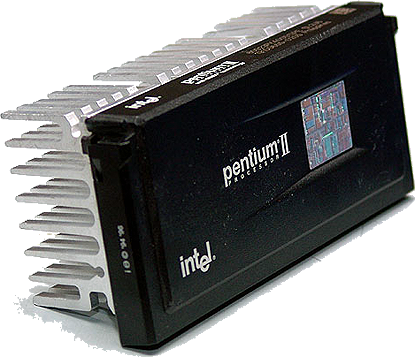
(Image Credit: isosystems.eu)
Date Released : 1997 (Xeon in 1998)
Clockspeed: 233MHz - 450MHz (Xeon 400MHz - 450MHz)
Did you know?
Cyrix Media GX (National Semiconductor)
Facing financial trouble, Cyrix found relief when it was bought out by National Semiconductor in 1997. It also found a change in philosophy, as National Semiconductor was much more interested in the value market than it was in trying to compete at the high end. The result of this new mentality was the Media GX, a processor based on the Cyrix 5x86 with integrated graphics, memory controller, and PCI controller. This would be paired with a companion chip that would contain the IDE controller, sound functions, and other tasks.
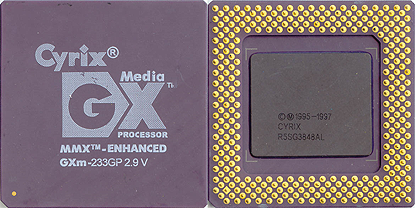
(Image Credit: ukcpu.net)
Date Released: 1997
Clockspeed: 120MHz - 300MHz

